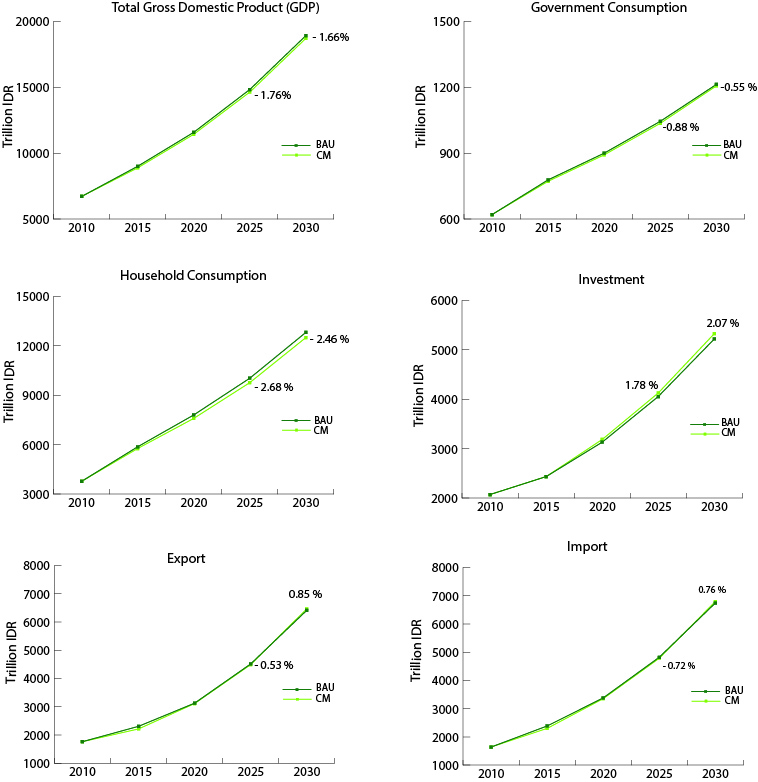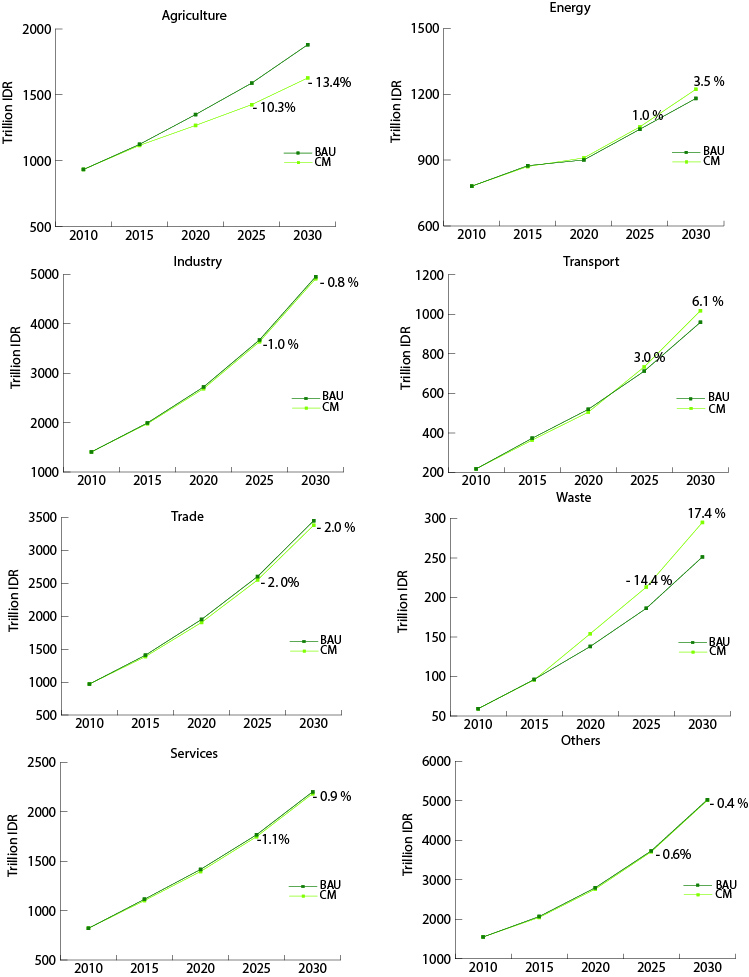Information of Paper
Potential impact of introducing emission mitigation policies in Indonesia: how much will Indonesia have to spend?
Authors:Marissa Malahayati and Toshihiko Masui
Year:2021
Journal:Mitigation and Adaptation Strategies for Global Change volume 26, Article number: 37
Keywords
CGE, Emission mitigation, Mitigation technologies, Nationally Determined Commitment (NDC)
Abstract
General Macroeconomic Impact
One of the main results of this simulation is to see the economic impact of the mid-term emission mitigation policy in Indonesia. Our simulation shows that by introducing emission mitigation policies, the total GDP loss should be around 1.66% compared to the BAU level by 2030 (Figure 1). The mitigation policies will lead to an increase in investment that is encouraged by the provision of more efficient technologies to support emission mitigation. The model projects that the investment will grow by 2.07% compared to the BAU level by 2030; it is an increasing growth compared to 2025 (1.78% compared to the BAU level). However, the share of investment in Indonesia’s economic structure is still small, especially if it is compared to household consumption. The investment improvement cannot offset the reduction in other variables, particularly household consumption that hit by -2.46% by 2030 compared to the BAU level.

Sectoral GDP
Our simulation also attempted to discern the impact by sector (Figure 2). It shows that agriculture would become the most impacted sector. Based on our model’s simulation, the agricultural sector would experience around 13.4% loss of GDP in 2030 compared to the BAU level by 2030. This sector is impacted the most because, under the GHG emission mitigation policies, the government wants to reduce land-use change and keep some conservation and carbon stock function areas. This sectoral GDP shock also impacts Indonesia’s industrial and trade sectors since the biggest industry and trade in the country include food and beverage products that are mostly supported by the agriculture sector.

Moreover, not all sectors will be negatively affected by implementing an emission mitigation policy because the introduction of mitigation technologies also leads to more investment, especially in energy, transport, and waste management. According to our simulation project, the sectoral GDP for energy, transport, and waste management will be higher by around 3.5%, 6.1%, and 17.4%, respectively, by 2030 compared to the BAU level.




